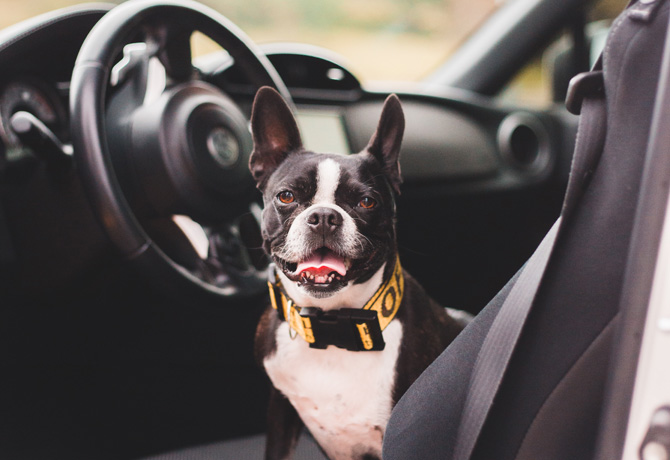Apparently, motion sickness is quite common in our canine chums. So what should you do if your dog gets car sick? Here are a few helpful tips and hints.
Certainly, dog car sickness is thought to be more prevalent in puppies than in older dogs. According to VCA Animal Hospital, this may be to do with the fact parts of the puppy’s inner ear might not have fully developed.
Yet, despite the reason, it can be really unpleasant for all involved if your dog gets car sick. Aside from the fact it might prevent you from taking your dog on trips with you, it’s upsetting to see your beloved fur pal feeling unwell.
Signs of car sickness in dogs
The key to preventing and treating motion sickness is recognising when your dog gets car sick. The common symptoms include:
- whining and pacing
- excessive drooling
- smacking or licking lips
- lethargy or inactivity
- vomiting
- diarrhoea
Of course, the last thing any pet owners wants to do when travelling or the minute they arrive at their destination is clean dog puke and diarrhoea from their car.
Therefore, if you notice your dog displaying any of the above signs it pays to stop the car and allow your dog some time outside the vehicle.
How to prevent motion sickness in dogs
Ideally, prevention (AKA conditioning) should start from a young age, when your dog is just a pup. For many dogs, the only time they ever go in the car is when they’re being taken for their annual vet check. In this instance, it’s no surprise the dog gets car sick and feels anxious!
Part of puppy training should involve inviting your fur baby to sit in the car with you. Whether the engine is on or off, this will help your puppy become comfortable being in the car.
The next step is to go for a short car ride — even if it’s to visit your neighbour who lives a few doors down. Slowly, over time, build up the length of the car ride.
The overall objective is to assist your pet to associate the car with pleasant experiences. You can offer your dog a few treats while in the car, but be mindful of not reinforcing bad car behaviour – such as getting over-excited or jumping from seat to seat.
If at any point your puppy or dog shows signs of car sickness, simply go back a step in your training. This might mean shortening the length of your journey or altering the dog’s positioning the car.
My dog gets car sick: actions to take
While conditioning your dog to ride happily in the car is essential, there are some other useful ways to help prevent car sickness.
Support your dog — using a pet carrier or harness can help your dog to feel safe and secure. Additionally, a pet carrier can be useful in the event your dog is sick or has diarrhoea as it’ll prevent mess in the car.
Control the temperature — ensuring the temperature is cool will help your barking buddy to feel relaxed and calm.
Home comforts — give your dog his blanket or one of your old jumpers or t-shirts to snuggle into while on the journey. Again, this will help ease your dog’s anxiety.
Take regular breaks — make sure you factor in regular toilet breaks on your journey. Not only will this help prevent your dog from having an accident in the car, but also he’ll enjoy the fresh air.
Withhold food — having an empty tummy may help stop nausea. Ideally, withhold food 12 hours before travel. However, make certain your pooch has access to clean, fresh water.
Information sources:
- Hunter, T. Motion sickness in dogs. VCA Animal Hospital. Accessed online: https://vcahospitals.com/know-your-pet/motion-sickness-in-dogs
- Newfield, A. Preventing motion sickness in dogs. Today’s Veterinary Nurse. June 2016. Accessed online: https://todaysveterinarynurse.com/articles/preventing-motion-sickness-in-dogs/
Image source: Unsplash.com







Leave A Comment